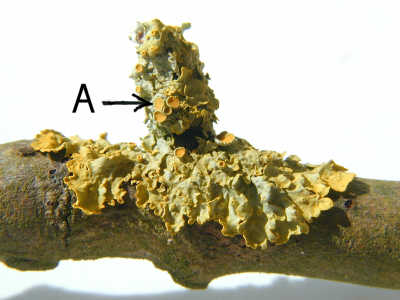 |
|
Four spore bodies shown at 'A' |
| Life on the
Rocks
A peep at the world of Lichens By Paul James (uk) |
Lichens are certainly fascinating forms of life. I think most of us have seen the forms that live on rock surfaces, especially in areas where the climate is damp. Some are very durable, having the ability to resist considerable variations of temperature and moisture conditions etc. Yet they are sensitive to the vagaries of air pollution, and in particular sulphur dioxide. Their presence therefore usually indicates clean air, though some are more tolerant than others.Lichens are in fact fungal structures which house algae in a symbiotic relationship, where the fungus provides shelter and security for the algal partner. The alga is able to furnish food for itself and for the fungal body. Their mutual existence is a close one and it is not easy to discern the two separate forms as such.
They are found usually on rock surfaces, walls, roofs, mortar joints, grave stones, twigs and boles of trees, fences, pavements, soil etc.. They vary in form and colour but most produce spores from specialised structures known collectively as Apothecia, which can usually be seen with the naked eye :-
 |
|
Four spore bodies shown at 'A' |
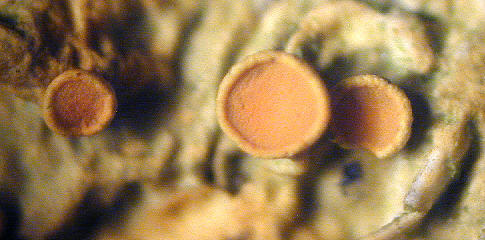 |
|
Elder twigs ( x 20 ) (x 3 objective & x 2 SLR converter with surface lighting) |
Identification is not easy, and even the highly coloured forms can be deceptive, so my skills in this department are not to be taken too seriously.
The following images are therefore offered to those who might be interested in these curious 'plants', hopefully whetting the appetite of those wanting to broaden their range of subject matter in the macro/micro fields.
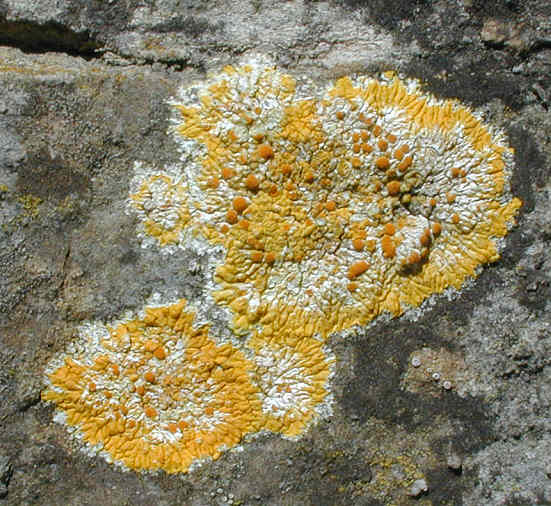 |
|
|
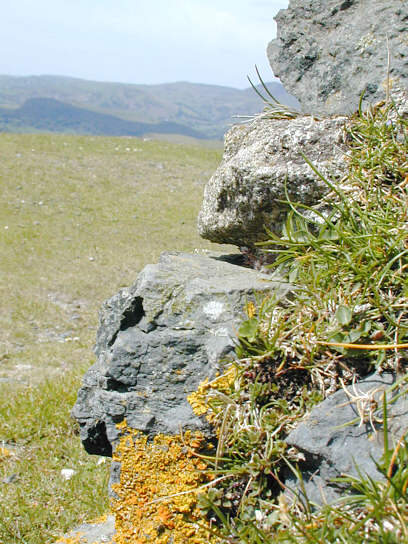 |
|
Llangollen, North Wales |
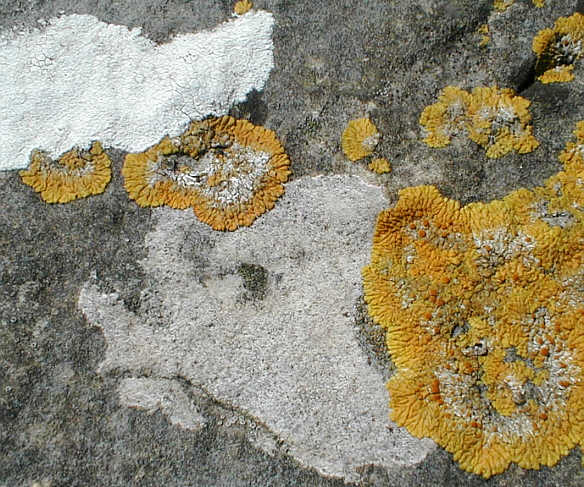 |
| At least three
forms exist on this limestone. Notice overlapping which
presumably indicates that the central grey lichen is the oldest, followed by the orange Xanthoria, which has been overlapped by the newest white lichen near top left. These examples have been here many years. |
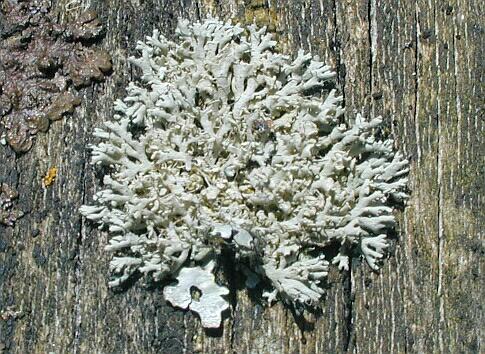 |
| Collema sp.
Found on wood handrail x4.
Cladonia sp. Upper left .....dark brown |
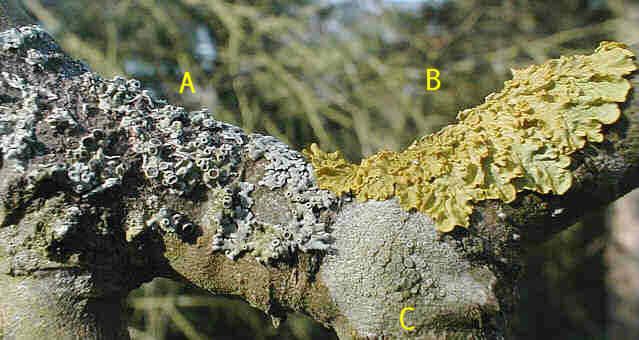 |
| Parmelia sp.
x 3. Growing on an Ash tree twig. Note two variations
'A' & 'B'. Spore bodies can also be seen above 'C' |
All photo's taken with the aid of a Nikon Coolpix 800, Carl Zeiss Photomic 1,
and also a document scanner
|
|
Please report any Web problems
or offer general comments to the Micscape
Editor,
via the contact on current
Micscape Index.
Micscape is the on-line monthly
magazine of the Microscopy UK web
site at Microscopy-UK